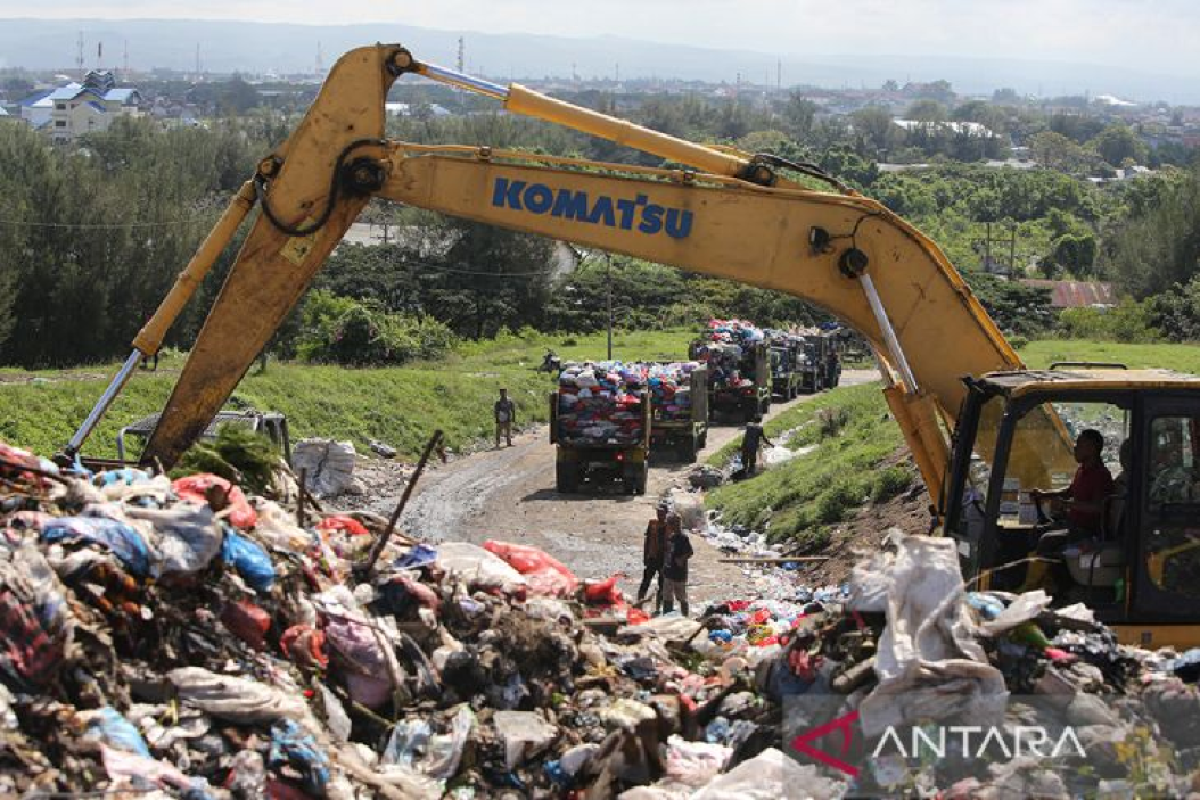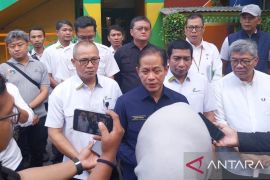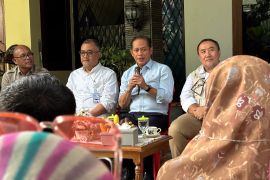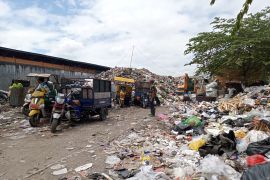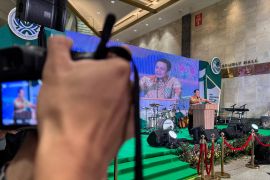Darma, 50, waits for trucks that carry organic trash to make their way back from the markets and residential areas of that city.
The clock strikes 4 p.m. local time, but none of them show up at that landfill owned by Banda Aceh's Environment and Cleanliness Office.
He then makes his way to a hydrolysis unit, a large steel box to contain organic waste. There are 14 hydrolysis units in the intermediate treatment facility (ITF) of the landfill.
Waste materials are dumped into the boxes and left to decompose before they are used as material for compost fertilizers.
As the sky darkens, rain pelts the area. Hurriedly, he makes a dash to seek shelter from the rain.
As the one in charge of the ITF, he then speaks at length about the waste management process and how those items were transformed into compost fertilizer and other things.
The making of compost
Darma said that he and his coworkers handle the composting process. They use waste from the landfill and the city's Al Mahirah Lamdingin Market.
Waste from the market can reach up to 500 kg per day, while waste selected from the landfill can reach some 250 kg per day.
After being selected and gathered, the waste is then brought to the hydrolysis units to undergo decomposition.
"For each hydrolysis (unit), we put some 750 kg or 900 kg," Darma told ANTARA recently.
He noted that they limit the amount to facilitate easier processing.
After the waste is placed in the hydrolysis unit, the next step is watering and turning it around, which is done once every two to three days. This step takes at least a month.
Once the waste decomposes within the hydrolysis units, it is taken out for drying until fully dried in order to ensure that the material contains no water. It aims to ensure that the grinding process is easier.
Once the grinding is complete, the material would then be taken to segregate the compost from the waste.
"The compost fertilizer resulting from 900 kg of organic waste is not much, just some 200 kg, because of the high rate of shrinkage," he said.
Making the city green
Head of Hazardous Waste Management at the Banda Aceh Environment and Cleanliness Office Asnawi said that compost fertilizers are sourced from that facility in Gampong Jawa as well as in Ilie Banda Aceh.
None of those fertilizers are sold or commercialized but used to maintain the greenery of that city.
"Hence, the compost fertilizers are used for (maintaining) the city's greenery at its parks and for its trees or plants that are in Banda Aceh's streets," he pointed out.
The Banda Aceh government no longer has to purchase fertilizers to tend to its greenery, as the daily production of 200 kg of compost has already met their needs to that end.
"The fertilizers are not sold because the (amount of) compost fertilizers we produce is limited, just enough to meet the needs of plants in the city," he noted.
Nonetheless, despite the amount of production, the government, at least, no longer needs to disburse money for fertilizers, and the budget could be utilized for other things, he noted.
Daily collection of 240 tons of waste
Some 240 tons of organic and inorganic waste are collected every day in that city, according to the office's records. That figure is only on normal days.
The volume could reach a whopping 250 tons per day during the holidays in Aceh, such as for the meugang tradition prior to the holy month of Ramadan, as well as Eid.
"During important days like holidays, the volume of waste in markets, of course, increases, so does (that from) households, because the people have more needs indeed," Asnawi opined.
On an annual basis, waste volume in 2022 amounted to more than 91 thousand tons, consisting of around 51 thousand tons of organic waste and some 40 thousand tons of non-organic waste.
The waste volume figure is lower as compared to some 142 thousand tons recorded in 2021.
In January 2023 alone, some 7.5 thousand tons of waste had been recorded, including 4.2 thousand tons of organic waste.
On a daily basis, the cleaners collect the trash from 6 a.m. local time until night. They work in three shifts, he said.
They collect the trash from residential areas, streets, and markets. Once they collect them, the waste is brought to the Gampong Jawa Landfill to be either burnt or processed into other things
However, not everything is dumped in the landfill. Some trash is collected by people to be sold or recycled.
"After people collect them, when the time comes, we pick up the waste to be recycled, and noted down in the trash bank's records, so it generates money for those people," he elaborated.
In Banda Aceh, some people, in fact, use their creativity to recycle waste. They make items, such as wallets, bags, and baskets.
"We then buy the handicrafts made by those whom we train, so they are consistently motivated to transform that waste into souvenirs," Asnawi pointed out.
The waste, which piles up in the landfill, is also turned into biogas.
To date, the office has supplied biogas, produced from waste, to 210 families in Gampong Jawa. However, the initiative has been cut short due to a broken pipe issue.
He said that biogas was still supplied, but the pipes needed to be fixed before more gas can be sourced to those people again.
"God willing, once Banda Aceh's budget sees some improvement, we will propose for a new pipe network, so this biogas can be enjoyed by the people," he concluded.
Related news: Sorting crucial for waste management: ministry
Related news: Surabaya can be pilot city for waste-to-energy project: Ministry
Translator: Rahmat Fajri, Mecca Yumna
Editor: Anton Santoso
Copyright © ANTARA 2023
